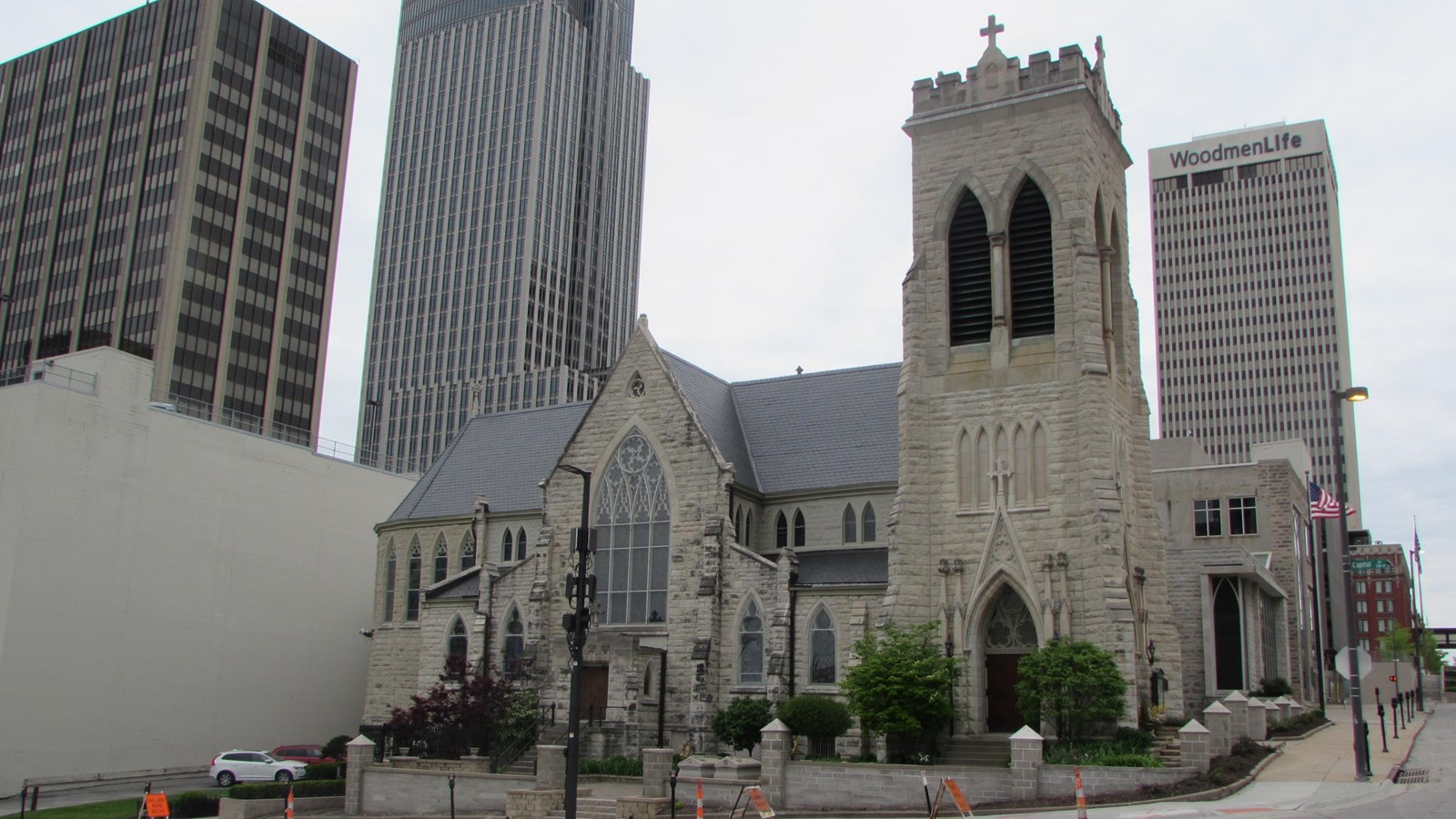Last updated: September 2, 2022
Place
Trinity Cathedral

David Calease, NPS
Quick Facts
Location:
113 North 18th Street
Significance:
Architecture; Social History
Designation:
National Register of Historic Places
MANAGED BY:
Private Property Owner
The Episcopal parish in Omaha was founded in April 1856, shortly after the initial settling of the city. The congregation, whose first members were some of the early pioneers of Omaha, played an integral role in building the Episcopal community. Prior to the construction of the cathedral, Episcopal services were held in different houses across the city.
Trinity Cathedral was constructed between 1880 and 1883 in a Late Gothic Revival style by English architect Henry G. Harrison, with Omaha architect Alfred Dufrene serving as supervising architect onsite. The building follows a cruciform plan with a tower addition and is built of gray stone. It features three stained glass windows by Tiffany on the south side of the nave along with dozens of other stained-glass windows throughout the building. Many of these windows were donated to the cathedral by prominent members of Omaha society, including Thomas Cuming, the first Secretary of Nebraska Territory, and James Woolworth, one of the first lawyers in Omaha. It was listed in the National Register of Historic Places in 1974.
Trinity Cathedral was constructed between 1880 and 1883 in a Late Gothic Revival style by English architect Henry G. Harrison, with Omaha architect Alfred Dufrene serving as supervising architect onsite. The building follows a cruciform plan with a tower addition and is built of gray stone. It features three stained glass windows by Tiffany on the south side of the nave along with dozens of other stained-glass windows throughout the building. Many of these windows were donated to the cathedral by prominent members of Omaha society, including Thomas Cuming, the first Secretary of Nebraska Territory, and James Woolworth, one of the first lawyers in Omaha. It was listed in the National Register of Historic Places in 1974.
